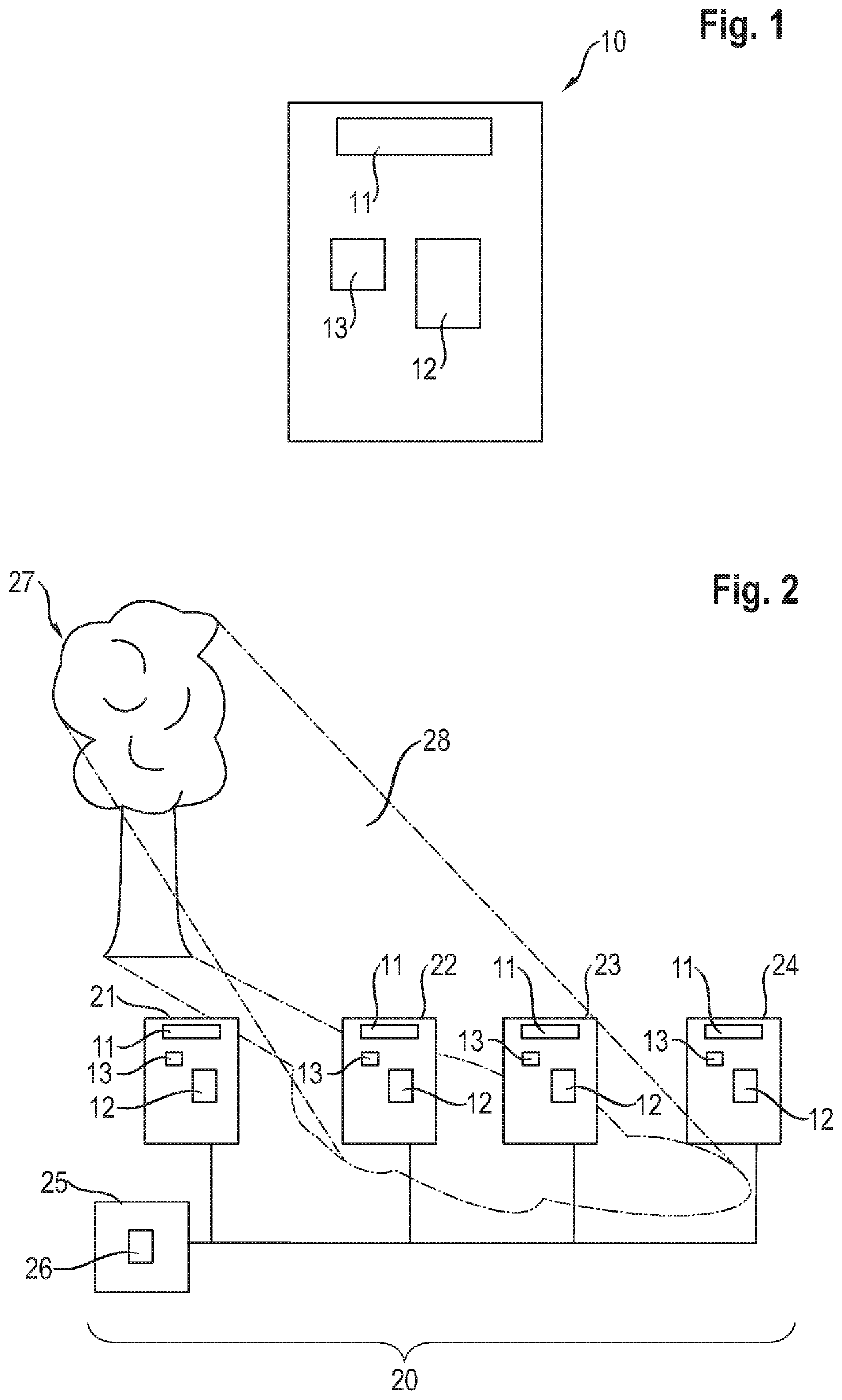Lighting concept for a charging park
a charging park and concept technology, applied in charging stations, electric vehicle charging technology, transportation and packaging, etc., can solve the problems of limited evaluation of received signals of light sensors, and achieve the effect of increasing the cooling capacity of the charging column in question, reducing the risk of failure, and increasing the degree of failsafety
- Summary
- Abstract
- Description
- Claims
- Application Information
AI Technical Summary
Benefits of technology
Problems solved by technology
Method used
Image
Examples
Embodiment Construction
[0027]FIG. 1 shows a schematic view of a charging column 10 which can be used within the scope of the method according to aspects of the invention. The charging column 10 has a lighting means 11 which is provided for illuminating the region around the charging column 10. Furthermore, the charging column 10 has a user interface 12 by means of which a user can carry out a charging process on the charging column 10. The user interface 12 may be a display means, for example a touch-sensitive screen. The charging column 10 further has a light sensor 13 for detecting the brightness level prevailing on the charging column 10. The charging column 10 additionally has a charging cable which, however, is not explicitly illustrated in FIG. 1.
[0028]FIG. 2 shows an exemplary charging park 20 which comprises four charging columns 21-24, wherein each of the charging columns 21-24 can correspond to the charging column shown in FIG. 1. The charging columns 21-24 constitute structurally and physically...
PUM
 Login to View More
Login to View More Abstract
Description
Claims
Application Information
 Login to View More
Login to View More - R&D
- Intellectual Property
- Life Sciences
- Materials
- Tech Scout
- Unparalleled Data Quality
- Higher Quality Content
- 60% Fewer Hallucinations
Browse by: Latest US Patents, China's latest patents, Technical Efficacy Thesaurus, Application Domain, Technology Topic, Popular Technical Reports.
© 2025 PatSnap. All rights reserved.Legal|Privacy policy|Modern Slavery Act Transparency Statement|Sitemap|About US| Contact US: help@patsnap.com

